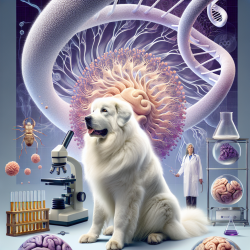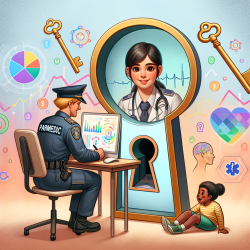Understanding the Genetic Link Between Great Pyrenees and Human Neurological Disorders
In the world of veterinary genetics, recent research has uncovered fascinating insights into the genetic underpinnings of neurological disorders in Great Pyrenees dogs. The study, titled "A SACS deletion variant in Great Pyrenees dogs causes autosomal recessive neuronal degeneration," sheds light on a genetic mutation that mirrors a human condition known as ARSACS (autosomal recessive spastic ataxia of Charlevoix-Saguenay). This discovery not only enhances our understanding of canine genetics but also provides a unique opportunity to explore potential treatments for similar human disorders.
The Canine Connection to Human ARSACS
ARSACS is a human neurological disorder characterized by progressive cerebellar ataxia and peripheral neuropathy. In Great Pyrenees dogs, a similar condition has been identified, marked by widespread central nervous system degeneration. The onset of clinical signs in these dogs occurs as early as four months, with a slow progression over several years. This condition is linked to a 4 bp deletion in the SACS gene, leading to a frameshift and truncation of the sacsin protein, which plays a crucial role in neuronal health.
Implications for Veterinary Practitioners
For veterinary practitioners, understanding the genetic basis of this condition in Great Pyrenees can significantly enhance diagnostic and treatment strategies. Here are some key takeaways:
- Early Detection: Recognizing the early signs of cerebellar ataxia and peripheral neuropathy can lead to timely interventions.
- Genetic Testing: Utilizing genetic tests to identify carriers of the SACS deletion can help in making informed breeding decisions, reducing the incidence of the disorder.
- Research Collaboration: Engaging in collaborative research can help uncover more about the SACS gene and its implications in both canines and humans.
Encouraging Further Research
This study opens the door for further research into the SACS gene and its role in neurological disorders. Veterinary practitioners and researchers are encouraged to explore the following areas:
- Comparative Studies: Conducting comparative studies between affected dogs and human patients to better understand the progression and potential treatments of ARSACS.
- Therapeutic Development: Investigating potential therapeutic interventions that could benefit both canine and human patients.
- Genetic Diversity: Exploring the genetic diversity within the Great Pyrenees breed to identify other potential genetic markers linked to neurological health.
To read the original research paper, please follow this link: A SACS deletion variant in Great Pyrenees dogs causes autosomal recessive neuronal degeneration.










